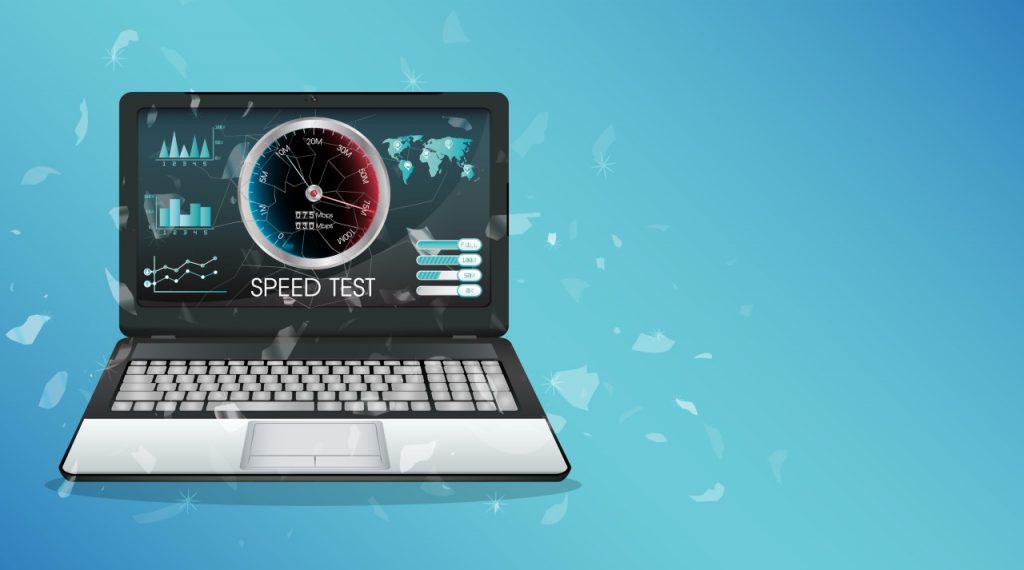
There are so many jargons in technology with new ones being created each day that it’s somehow difficult to keep up. Nonetheless, there are some terms that you need to know about because they can affect your everyday life.
If you’ve experienced and became frustrated over a slow Internet connection, then you may have tried conducting a speed test to try and figure out what’s wrong. You can find several websites that provide Internet speed test services such as speedtest.net. These sites have straightforward designs that measure your connection’s download, upload, and ping rates with just a click of a button. They’re easy to use and allow you to assess if your Internet service provider (ISP) is giving you the bandwidth that you paid for.
Here’s an in-depth look at each of the elements that you can see on Internet speed test results:
Download Speed

Slow Connection? Here’s A Smart Tip For Speeding Up Your Internet!
Your download speed pertains to the speed by which you receive data from the website server to your device through your Internet connection. Typically, this rate is higher than your upload speed because a large proportion of customers’ online experience comprises browsing web pages and streaming music and videos. Download speed is measured using megabit per second, which is often written as Mbps.
These are the download speeds provided by ISPs and how they affect your experience:
- 3 to 5 Mbps – This speed allows you to stream films with quality of up to 480p and listen to music without waiting too long for the movies and songs to load. You can also play online games without experiencing too much lag. Downloading a 1 gigabyte (GB) file at 5 Mbps may take about 27 minutes.
- 6 to 9 Mbps – With this, you can watch better quality videos of up to 720p. Buffering is also lessened as it happens in the background. Retrieving a 1 GB file will take you approximately 15 minutes with a speed of 9 Mbps.
- 10 to 19 Mbps – You can perform multiple actions simultaneously with this range of speed without compromising the quality of each task. Video calls and streaming high-definition movies pose no problem with this connection. You just need around seven to 12 minutes to complete a 1 GB download.
- 20 Mbps and Up – A speed of this caliber is ideal for people who need to retrieve large files frequently, such as video editors and graphic designers. 1080p quality videos and even 4K streaming is not a challenge for this speed. Downloading a 1 GB file can take just 5 minutes or less.
Upload Speed

Plug In, Speed Up: Improving Your Internet Connection
Upload speed informs you of how quickly you can send data from your device to other computers or servers. Commercially, download and upload speeds aren’t equal to lower the cost of your data plan. That’s why the latter will usually be a single digit, unlike the former which can go as high as 100 Mbps. For homeowners, having a 25 Mbps download speed and 3 Mbps for upload is an ideal setup.
A high upload speed benefits businesses because it helps with:
- Quickly attaching large files on an outgoing email
- Backing up data on your servers
- Sending data to cloud applications such as iCloud, Google Drive, and Dropbox
- Hosting your website in-house
- Conducting voice over IP (VoIP) phone calls
- Using Skype or FaceTime for video calls
Round-Trip Time (RTT)

Speeding Up Your Online Design Projects
Round-trip time (RTT), also called round-trip delay, is more commonly known as ping. This rate gives you an idea of the time it takes for your request to be received by another computer or server. It can be viewed as the reaction time of your connection. The measurement used for this speed is in milliseconds (ms) as seen on speed testing sites.
Generally, you want a small ping for your Internet so that you can have a seamless experience when browsing or streaming online. Moreover, this rate is particularly crucial for gaming where timing is everything, as a lesser delay means that your command will be acknowledged quickly by the game server. Plus, it’s imperative that you look for a server that’s nearer to your physical location so that the data you send and receive won’t have to go through many hops or paths.
Conclusion

Understanding the various elements in your Internet speed test results can help you identify the factors that are slowing down your Internet connection. Knowing your download, upload, and ping rates will also inform you whether your ISP is giving you the right service. Remember that your connection must reach at least 80% of the advertised speed for your data plan.




